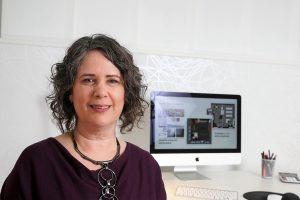Spaces to Go
An e-design platform takes aim at the cost and time associated with commercial interior design services
Photo: Monica Sharman
MONICA SHARMAN FEELS strongly about the impact physical space has on a company’s culture, staff productivity and the ability to attract and retain top talent. And helping businesses create the right kind of environment was the bedrock principle behind the interior design business, In Design Associates Inc., she opened 11 years ago.
But around five years ago, she took note of a developing trend in the local market, particularly when it came to the proliferation of small tech startups in the city.
“The tech industry accelerated how quickly startup businesses grow,” she says. “They might start with 20 employees, scale to 50 in year-one and then up to 100 in the first couple of years. But like every startup, they have to watch their cashflow and tend not to hire an interior designer because they can’t afford custom design services.
“Typically, a startup might purchase office furniture with no thought to the acoustics of the space or how it will support people’s ability to get the job done,” she continues. “A space that encourages creativity and collaboration is not just a bunch of desks in a bullpen.”
Invested and wanting to see startups succeed, Sharman started to investigate ways to offer commercial interior design services, regardless of a company’s budget. She launched The Biz Designer in early 2019 to offer an e-design option as a cost-effective, accessible and flexible alternative to traditional commercial interior design services.
“A space that encourages creativity and collaboration is not just a bunch of desks in a bullpen” —Monica Sharman
In many ways, it is similar to how some residential designers have begun to tailor some of their services for the digital age—quick hits of design advice, often setting the design framework for just a single space, for a fee. Whether you call it e-design, remote design or virtual design, these services typically engage a new type of design-savvy client who wouldn’t otherwise have the resources to work with a professional.
The Biz Designer initially targeted home offices, startups and scale-ups—small companies with tight budgets that would value the practicality and functionality that commercial interior design services offer. What surprised Sharman, however, is the number of large corporate clients who have turned to The Biz Designer for small projects.
“I didn’t anticipate the early adoption by my existing corporate clients,” she says. “Many now toggle between In Design Associates and The Biz Designer, which is a much more simplified service. For example, to do a refresh on an office or the lunchroom, they might need a bit of help with the paint plan or to pull different design elements together, then they will manage the execution themselves.”
With startup and scale-up projects, Sharman works with clients to identify not just current, but also potential future needs.
“In recent years, we noticed this type of client paying too much for construction when their lease is so short. Instead, we offer suggestions to divide spaces that are moveable.”
Flexible and moveable solutions might include transportable pods or booths that can simply be unplugged and moved to a new location. “We started to see these in the North American market about four years ago,” says Sharman. “They are not inexpensive, but they incorporate the elements that help people thrive.”

At the moment, Sharman’s two businesses are autonomous, with very different business models.
“With custom design through In Design, we guide our clients from programming through to installation. And custom is as it implies—a unique design for each client and typically involves the coordination of other consultants, such as engineers and architects. With Biz Designer, we have developed ways to save considerably through a combination of our processes and the tools we use,” she says.
One reason e-design is less expensive is because there is no onsite consultation, so Sharman and her staff can complete the work without leaving their office. The virtual nature of the business also allows for a greater geographic reach, and while Sharman is happy with The Biz Designer’s current organic growth, with the available tools and technology she can envision future expansion far beyond Southwestern Ontario.
“My goal is to continually add information, free resources, articles and items for purchase to the website so that even if they don’t want to use our services the site will be a resource for the do-it-yourselfer, and we’re here to help when and if they need it.” ![]() Kym Wolfe
Kym Wolfe

